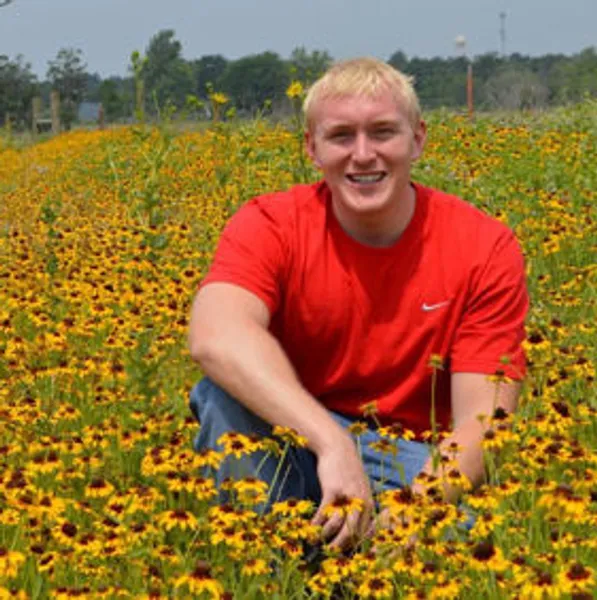Doctors Are Speaking Out
Medical professionals and researchers are raising serious concerns about LASIK that the industry doesn't want you to hear.
Two Critical LASIK Facts
The LASIK industry has long claimed exceptional safety and satisfaction rates. The evidence tells a very different story.
Fact #1: Complications Are Far More Common
LASIK providers claim complication rates of "less than 1%." However, numerous clinical trials and studies show the actual rate is 10-30% or higher. Most complications are permanent.
- Halos impact 18% of patients (not correctable with glasses or soft contacts)
- Starbursts: 20% (not correctable with glasses or soft contacts)
- Dry eyes: 21% (sometimes requires expensive and difficult treatments)
- FDA MAUDE database: 16,000+ injury reports
- Clinical studies consistently show higher complication rates than advertised

Fact #2: Satisfaction Is Much Lower Than Claimed
LASIK providers tout satisfaction rates of "95%+" based on industry-funded studies. Real-world data says otherwise:
- RealSelf satisfaction score: only 76.7%
- Japan Consumer Affairs Agency survey: 43% reported problems (see Q11). One in four reported not having improved eyesight.
- 2025 UAE Study: 35% would not recommend LASIK after getting it themselves, almost 30% responded being unsatisfied with results or only partially satisfied
- Thousands of negative reviews and testimonials online
- Many patients report being inadequately informed of risks
- Dissatisfaction often involves quality-of-life impacts not captured in clinical metrics
- Many satisfied patients still note that they are experiencing halos, starbursts, dry eyes, difficulty driving at night, among other issues.
Why 20/20 Doesn’t Guarantee Quality Vision
LASIK permanently shrinks the optical zone of your cornea. At night your pupils dilate beyond that treated zone, so light spills over the edge of the ablation—even if the eye still reads 20/20 on a chart.
Shrinking the Window You See Through
- Healthy night pupils commonly open to 7–9 mm.
- LASIK optical zones are typically 5.5–6.5 mm—often smaller in real-world outcomes after fully healing.
- The mismatch creates halos, glare, starbursts, and reduced contrast that glasses can’t correct.
- Once ablated, the larger natural optical zone can never be restored.
Dig deeper in the Suggested Reading guide, including expert commentary and measurements.
Slide to compare the full optical zone you have before LASIK with the reduced zone after surgery.
IN MEMORY OF LIVES LOST
Remembering those who lost their lives to LASIK complications. Their stories must not be forgotten.

Ryan Kingerski
Ryan Kingerski was deemed an ideal candidate for LASIK and underwent the surgery on August 15, 2024. Following LASIK, Ryan developed double vision, blurry vision, halos, floaters, intense migraine headaches, eye pain, and sensitivity to light. He was also overcorrected in one eye. The staff at the clinic were dismissive and told Ryan that he simply needed time to heal. Months passed, but Ryan's condition did not improve. These complications prevented him from functioning in his daily life and performing his duties as a police officer. The clinic abandoned Ryan after just a few months, leaving him to search for solutions on his own, to no avail. On January 26, 2025, Ryan Kingerski took his own life. Read more at CBS News.

Jessica Starr
Jessica Starr was a meteorologist, wife, and mother of 2 small children. She ended her life on December 12, 2018, two months after she went in for laser eye surgery to correct her vision. Jessica's husband, Dan, talked about Jessica's struggles with her Lasik complications after the surgery with her employer, Fox2 Detroit.

Max Cronin
Max Cronin had his whole life ahead of him, filled with promise. Max joined the U.S. Army and served in the war in Iraq. In 2009 while stationed at Ft. Hood, Max had Lasik eye surgery. After leaving the Army, Max returned to Texas. In July, 2015, Max opted to have a PRK laser eye surgery retreatment because his vision was declining. Max experienced several Lasik complications such as dry eyes, constant eye pain, declining vision, corneal haze, and night driving problems. The complications he suffered took a huge toll on his quality of life and prevented him from working and continuing his education. To add insult to injury, Max felt that his laser eye surgeon was arrogant and lacked compassion. Max wrote several suicide letters stating that he was going to kill himself because his laser eye surgery had ruined his eyes and his life.

Colin Dorrian
Colin Dorrian was a promising law school student when he sought relief from a chronic dry eye condition by undergoing Lasik laser eye surgery. However, rather than improving his vision and freeing him from his contacts, the Lasik complications left him with so much eye pain and fuzzy vision that after six years, he took his own life... Dorrian, who ended his own life six years after having Lasik surgery, should have been disqualified from having the surgery. His pupils were overly large, and he suffered from extreme dryness of the eyes—two conditions that should have disqualified him from having the procedure. And yet he was cleared for it.

Who We Are
Vision Advocacy, Inc. is a 501(c)(3) nonprofit with a board comprised of people who are unpaid volunteers and have been directly negatively impacted by elective eye surgery such as LASIK. It is a fully non-profit organization which relies on donations to operate and is focused on providing accurate information, testimonials and data on the risks of elective eye surgeries as well as providing treatment and coping resources to those who have been negatively impacted by elective eye surgery.
Our History
We saw a huge unmet need for financially-unbiased information about LASIK and other forms of elective refractive eye surgery. Ophthalmologists who perform these surgeries are more interested in selling surgeries than in a patient's right to be fully informed.
Buyer beware!
Our Mission
To provide assistance and resources to those with complications from LASIK or other elective eye surgery. We also aim to provide treatment options to assist in living with the complications of elective eye surgery. Our mission is to provide complete educational resources to those contemplating laser eye surgery and to advocate on behalf of these groups.

